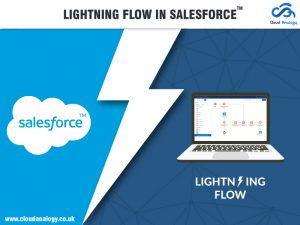At the end of 2015, Salesforce announced the all new innovative and re-imagined platform- Salesforce Lightning experience. The world’s number 1 CRM platform also enabled various features and functionalities for streamlining the sales process to grow your business.
What Is Lightning Experience?
Lightning Experience is a modern user interface that helps your salespeople understand their data easily and increase the productivity of all users. However, Lightning Experience does not support all features of Salesforce. Moving to the new Lightning interface from the Classic edition is still optional and the users permitted by you for Lightning Experience can switch between them.
As a potential user of Lightning Experience, you need to determine if and when your organization is ready for Lightning. The more features and functionalities you customize in your organization, the more likely it will not be simple to switch to the Lightning UI. However, investing in changes that allow your team to use the new interface can be a great experience.
Salesforce has made a big step in moving more customers into Lightning.
The following steps explain what you need to do to prepare your Org Lightning ready:
Step 1: Login to your Salesforce Org
After logging into your Salesforce Org, move to the setup page. Under the search bar, click on the option Lightning Experience.
Step 2: Org Evaluation
In the Classic edition of Salesforce, go to setup. On the homepage, you will find “Lightning Experience Migration Assistant” call-to-action button labeled “Get Started.” You can learn about Lightning interface and scan your Org here to understand how it relates to your unique implementations
The Readiness Assessment is the first step you must take when evaluating potential customizations that might conflict with Lightning. The assessment reviews all your objects, special fields, buttons, Visualforce pages, and more. After completing the assessment, you will receive a full report of possible conflicts that would need to be resolved with Lightning.
For instance, the report identifies a button that is not compatible with Lightning since it will be replaced by a dropdown functionality within the actions for a particular record.
You can depend on the evaluation to determine the required changes you need to make in the Salesforce Sales Cloud. However, if you rely heavily on third-party applications, you will need to check with the provider to understand Lightning’s readiness.
Step 3: Communicate with your Stakeholders
The first step towards Lightning readiness is a good opportunity to check how you will use Salesforce features. There might be customizations or applications that are redundant and you no longer use. There may also be a few applications that would not be compatible with the Salesforce Lightning Experience platform but can be archived.
When determining how you are using Salesforce, it’s a perfect idea to interview Salesforce’s key stakeholders to understand adoption issues and ideas about how you can be benefitted more.
What new Lightning features are more appealing to users?
What features do you use in Classic that are not available in Lightning and how can we archive them?
How do you use automation, including workflows and triggers?
What other ways can Salesforce users help you get better reports or improve performance?
If you have had changed the administrator, developer, or Salesforce partner in the past for any reason whatsoever, it is important for you to review the processes and scenarios where basic configuration can occur. If the documentation does not refer to customizations, it may take longer to access existing or old automation.
Step 4: Determine your Salesforce Roadmap
Do you have problems with the cleanliness of your database or adoption problems? Does your executive team receive the reports needed to make effective decisions?
Many companies choose to make additional improvements when they turn to Lightning. For long-term users, this is a good time to re-evaluate your Salesforce roadmap and consider if you can add more products.
If your assessment report contains items that require correction and adjustments, this is the best time to review the overall strategy for them and other features. Fortunately, there must be newer options and the AppExchange application that offers more out-of-the-box features & functionalities and personalized support.
Step 5: Check the Product Roadmap
Salesforce keeps updating and introducing the features and functionalities of its releases. If the feature you’ve been looking for is missing as of now, there is nothing to get disappointed as it may be soon on the cards.

Deepali Kulshrestha
Salesforce Certified Developer | Delivery Management Head
“Deepali, a certified Salesforce Advanced Administrator and Salesforce Developer and CSPO Certified at Cloud Analogy, is a successful name in the industry circles when it comes to the delivery of successful projects with end-to-end testing. Deepali is a globally-renowned industry stalwart when it comes to managing Operations & Delivery Planning in driving Business Performance Management. Over the years, she has also demonstrated great leadership qualities in the context of Organizational Development & Change Management / Transformation, Delivery Planning & Management, Resource & technology pool management, and driving end-to-end Business Process Excellence and Organizational Transformation. Deepali is the Women-In-Tech (WIT) leader, Faridabad Region of Salesforce apart from being an active leader in a wide range of other socio-economic activities and events.”




